Unipod - Practical
Gadget for Long Exposures In many photographic situations, it is practical to use a tripod. It allows you to choose longer exposure times without blurring the image caused by camera shake. Especially in macro photography, when taking group pictures or night shots, a tripod proves to be extremely useful.
But the classic tripod gets on the nerves of most photographers after a while. It's big, clunky and heavy, so it often needs its own tripod bag. It takes a few minutes to set up, which may mean that the desired subject is gone before the tripod is ready for use. Doing without the tripod completely, however, is often not an alternative for photographers. Since long exposure times would not be possible, it would be necessary to select a higher ISO value in order to still achieve correctly exposed pictures. However, this is always associated with strong image noise. Especially with the onset of twilight, the quality of the images then suffers visibly.
The perfect solution to this problem is provided by monopods. They only have one foot, which makes them lighter, more compact and space-saving. Although you have to hold such a "monopod" with one hand when you take photos, it still compensates very well for a slight tremor of the hand. The great advantage of the monopod is that you can set it up in no time at all. You therefore do not risk extreme changes in the shooting situation until the tripod is in place. Monopods are offered for both 1/4-inch and 3/8-inch camera thread sizes. Many models are even equipped with an adapter. Then they can be used for both systems.
To help you choose the right monopod, you will find a buying guide below that tells you which aspects are particularly important when buying. In this way, you can avoid expensive bad purchases and ensure that you will be completely satisfied with your new 1-leg tripod.
Definition: What is a monopod?
The name of the monopod already indicates what it is: The tripod has only one leg, which distinguishes it significantly from other types of tripods such as the classic tripod. In the meantime, however, models are also called 1-leg tripods that have a main leg and additionally a three-legged spider at the bottom. This is called a self-standing base. Such models are available from Manfrotto, for example.
Strictly speaking, the traditional monopod is not a real tripod at all, because: The term tripod comes from the Latin word "stativus" and means something like "fixed". Since it only has one leg, it cannot stand on its own. Rather, the monopod is a support: it carries the weight of the camera system and compensates for major wobbles, but does not bring as much calm to a shot as, say, a tripod.
What are monopods suitable for?
Monopods come into question for various uses. They are particularly common in the following situations:
- Sports photography
- Macro photography of insects and birds
- For pulling along moving subjects to blur the background (panning)
- For simple panorama shots when a 100 percent straight horizon plane is not important
For wildlife photography in particular, the tripod is often too bulky. With it, you would usually touch the leaves or the bush where the birds or insects are and make too much noise. Here the monopod is often the only alternative.
What are the advantages and disadvantages of monopods?
If you opt for a monopod, you will enjoy numerous advantages:
- Longer exposure times can be realised without shaking
- Unsteady, shaky hands are compensated
- The weight is low
- The set-up is quick and easy
- Thanks to the small dimensions, it fits into the normal camera bag
However, there are also a few disadvantages with the monopod that you have to put up with:
- The monopod does not stand on its own
- The stability is worse than with the tripod
It is important that you choose the right monopod so that it fits your camera and your needs.
What aspects are important when buying a monopod?
To choose a suitable 1-legged tripod, you should pay attention to the following points when buying:
- Weight and material
- Packing size and working height
- Tripod thread and tripod head
- Plate and tripod base
In the following, we explain the individual features and tell you how to make the right choice.
Weight and material
Most monopods are made of carbon or aluminium. Both materials have advantages and disadvantages and, of course, affect the weight. Carbon is a plastic that is interwoven with carbon fibres. The material is very stable and weighs less than aluminium. Although tripods made of carbon are usually expensive, the investment often pays off. If you are only going to be out and about with the one-legged tripod now and then, however, an inexpensive model made of the heavier aluminium is usually quite sufficient.
Packing size and working height
The packing size indicates the length of the tripod when it is folded up. It should be small enough to fit easily in your photo backpack or bag. The height of the tripod when extended, on the other hand, is called the working height. Contrary to popular belief, it does not have to be exactly your height. Both the tripod head and the camera add a few centimetres to the installation. In addition, your eyes are not at the top of your head.
Tripod thread and tripod head
It is important that you choose a tripod that fits the thread of your camera. The tripod thread can be either 1/4 inch or 3/8 inch. Provided your camera or tripod head has a different thread size, you will need to look for another 1-leg tripod or buy a thread adapter in addition. However, most current monopods are compatible with the common 1/4 inch format. Many have a thread adapter that you only have to turn to change the format to 3/8 inch.
Additional tripod heads allow you to adjust even better to certain shooting situations. A distinction is made between:
- Three-way panhead: The camera can be adjusted in three axes. It makes it possible to also shoot subjects on the ground or in the sky without having to swing the entire tripod back and forth.
- Ball head: It offers the possibility to swing the camera freely in all directions. It is adjusted with a comfortable handle.
- Panorama head: This tripod head is equipped with a spirit level and a graduation, which is why single images can be taken accurately for panoramic photos.
So before buying, you should consider what you will use the monopod for most often and choose the appropriate tripod head accordingly.
Plate and tripod base
With heavy cameras, it is cumbersome to screw them onto the tripod thread every time they are used. That is why so-called quick-release plates are offered, which are permanently screwed onto the tripod. The simple lock of the plate then clamps the camera in no time at all. It is best to choose a model with a rubber base or metal spike to prevent the monopod from slipping away.





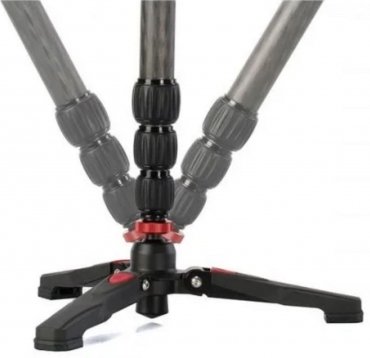

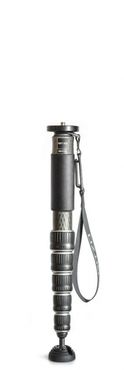

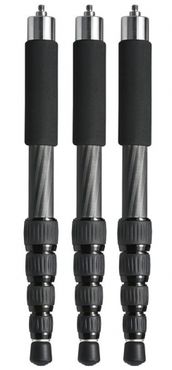
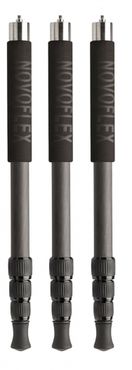
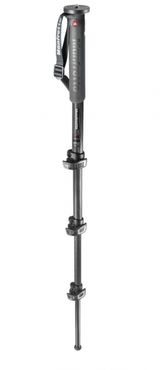
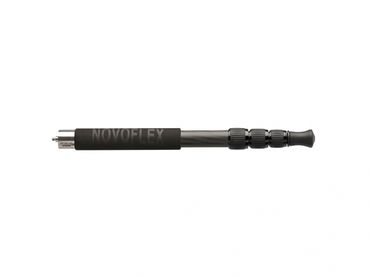
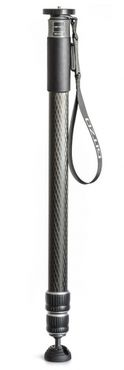
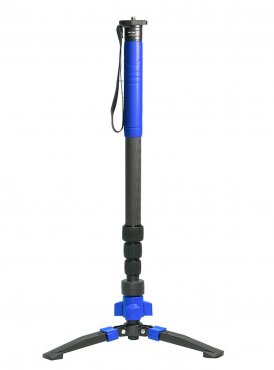

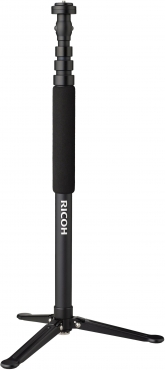
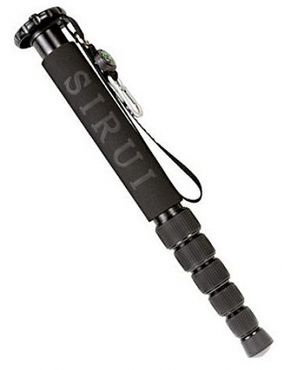
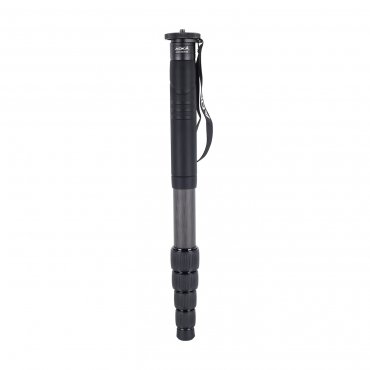
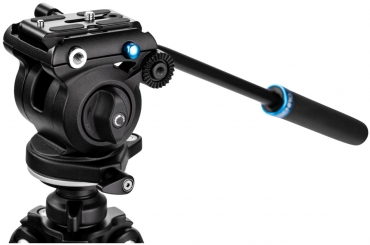
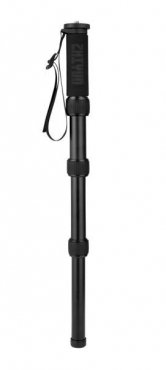

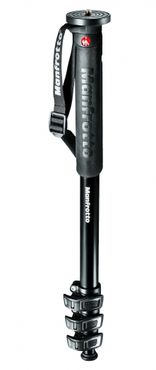


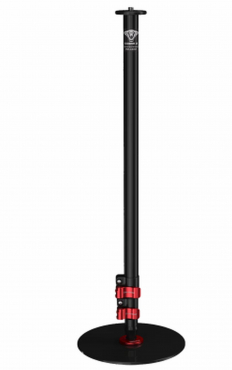


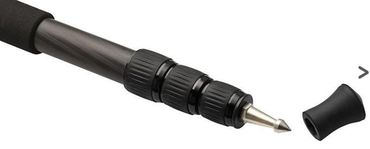
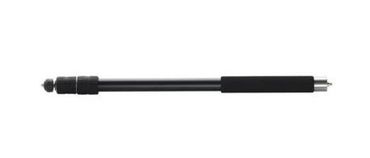
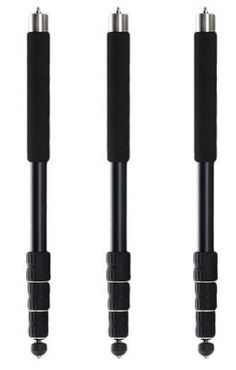

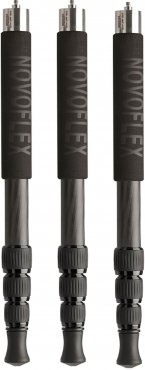
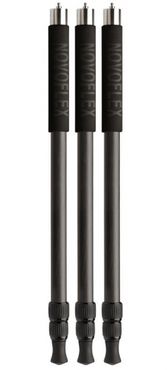


Simply subscribe and benefit as a newsletter recipient every week: